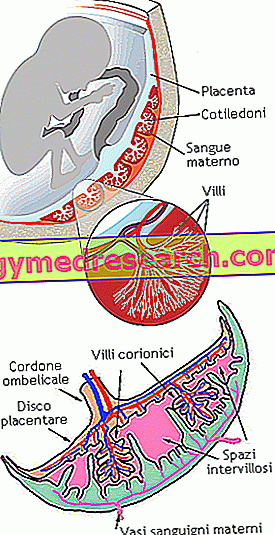Generality The sphygmomanometer is the instrument through which it is possible to determine the arterial blood pressure . Arterial pressure is a very important vital parameter, since its alterations - in defect or in excess - can give rise, or be an index, to very serious disorders. The invention of the first sphygmomanometer models dates back to the second half of the nineteenth century, but it was only at the end of the same century that the Italian doctor Scipione Riva-Rocci invented the first mercury sphygmomanometer, still used today
Category blood pressure
Generality The minimum high pressure is the medical condition in which the diastolic pressure value constantly exceeds 90 mmHg. In general, the minimum high pressure falls within a context of hypertension, therefore in a state in which even the systolic pressure is constantly, and exceedingly, above the norm (therefore not only higher than 120 mmHg, but also of 140 mmHg)
Generality Arterial hypertension is a condition, constant and not occasional, in which the arterial pressure at rest is higher than the normal physiological standards. Hypertension is one of the most common diseases in industrialized countries; in fact, it affects about 20% of the adult population and represents one of the major clinical problems of modern times
Generality The systolic pressure , or maximum pressure , is the value of arterial pressure when the heart is contracting, in order to push the blood into circulation; in other words, it is blood pressure with each heartbeat. Systolic blood pressure can be affected by permanent declines or increases, which indicate the presence of something that, in the human body, no longer works as it should
There are many factors that can change the pressure values recorded in a given population. These values may in fact vary according to sex, age, body weight, race, apparatus used, time of day, and the psychophysical and general health of the individual *. Precisely in relation to this last point, it is natural to wonder if there are ideal pressure values, and what is the normal range to follow. Nu
Low blood pressure is an annoying and sometimes disabling condition. It mainly affects women, especially fertile ones. In most cases it is considered a physiological condition, but at certain levels of severity it can be considered a disease. Symptoms of low blood pressure appear more significantly based on the severity level; however the subjective predisposition plays a fundamental role
Definition Orthostatic hypotension consists of a sudden drop in blood pressure following the sudden transition from a sitting or lying position (stance posture) to an erect one (orthostatism). In order to be able to speak for all purposes of orthostatic hypotension, the drop in blood pressure must be consistent, greater than 20 mmHg for systolic pressure or 10 mmHg for diastolic blood pressure
Premise Low blood pressure is a condition in which blood pressure values at rest are lower than normal. In numerical terms, if the normal arterial pressure falls within a range of values ranging from 90/60 mmHg to 129/84 mmHg, hypotension sufferers have a resting arterial pressure lower than 90/60 mmHg (NB: the first value it is the so-called systolic or maximum pressure , while the second value is the so-called diastolic or minimum pressure ). NB: lo
Blood pressure tends to decrease significantly and progressively during the first few months of pregnancy, to then stabilize and gradually rise to pre-pregnancy levels in the last trimester of gestation. Despite the difficulties in establishing ideal reference values, the optimal diastolic level appears to be around 75 mmHg in the first and second quarters, and 85 mmHg in the last two to three months of pregnancy
Blood pressure begins to decrease progressively after the first weeks of pregnancy, stabilizing at around 75 mmHg (diastolic pressure) throughout the rest of the first and second trimester of gestation. In the last two to three months before birth, however, blood pressure levels return to pregravidical levels, ie around 85 mmHg for diastolic
Generality Low pressure is a condition characterized by lower resting values than normal. In numerical terms, an individual suffers from low blood pressure when his arterial pressure at rest falls below 90/60 mmHg. Although less frequent than the most serious and worrying hypertension, low blood pressure (or hypotension ) is a rather common disorder, which is frequently associated with generalized fatigue, dizziness, a sense of fainting, confusion and blurred vision. Lo











